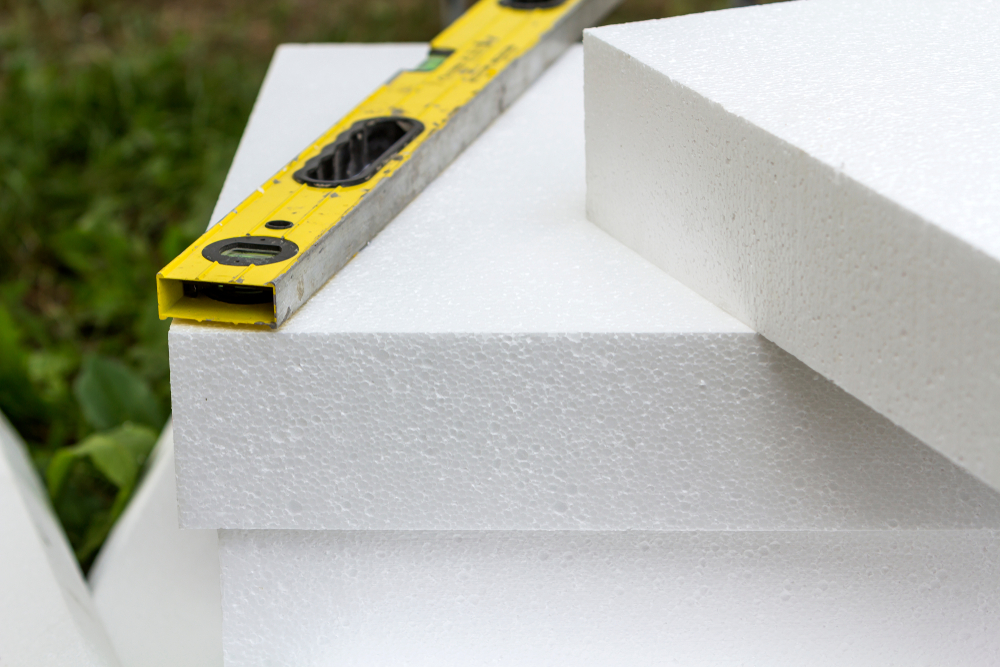With the ever-widening range of new insulation materials available today it can sometimes seem rather complicated when choosing which product to use in the best location for the right result.
Roxul Comfortboard and Rigid Foam Board insulation are two very different products, each with their own strengths and weaknesses. The particular properties of each define where and how they should be used, but in some situations they score equally well.
So what attributes set them both apart? Where does one work better than the other? How can you be certain that your insulation strategy is the right one to follow?
Here’s our brief guide to help you decide.
Roxul Comfortboard: What is it?
Roxul Comfortboard is a mineral wool insulation that comes under the Rockwool umbrella. As the manufacturer’s name suggests, Roxul is literally made from rocks, usually by-products of other industrial processes. It is superheated and then spun into fibres to create wool insulation.
Foam Board Insulation: What is it?
Foam board comes in three main standard forms, Polystyrene, Styrofoam and Polyiso. All three are moulded plastic products that use a mix of recycled material and propellant gases in their formation. Polystyrene, for example, is 2% plastic and 98% air, making it an efficient, and very light product.
Which is the Best at Stopping Heat Transfer?
The measure used to describe heat flow through a material is called the R-value. The higher the number, the better the resistance, which means that a product with an R-value of 2, will have twice the effectiveness as an insulator as a product with an R-value of 1.
Foam boards top the league tables in this situation with Polyiso coming first with an R-value of up to 7.5 for a factory fresh board. Even with subsequent off-gassing over the lifetime of the board it will average out at around 6.5. Polystyrene and Styrofoam rate at 5-5.5 respectively, and do not lose R-value over time.
Roxul Comfortboard, on the other hand, has a lower R-value of maximum 4.1 per inch, however the efficiency of foam board depends upon the proper installation of it as an air barrier, the joins and penetrations have to be properly sealed.
When looking at these results it would indicate that foam board insulation would be better for protecting the thermal envelope of a building, especially when space is at a premium and you need a bigger R-value in less depth.
Which Is the Best For Stopping Sound Transfer?
A good measure used to describe sound transfer through a material is its STC rating (Sound Transfer Classification), which tells us how well a product fared in laboratory conditions, and how many decibels the material was able to mitigate.
Roxul Comfortboard has a rating of 45, which makes it ideal for installing in partition walls between internal rooms. Coupled with drywall it should deliver an overall STC rating of over 50, enough to give occupants a good level of privacy, however, electrical outlets and any other penetrations should be properly sealed to stop any sound bypassing the insulation.
By contrast, Foam boards do not have any STC ratings as they are not made for such an application. However, sound waves travel on the air, so if the foam boards are properly sealed with a low-rise spray foam, then it should go some way to mitigating sound transfer through external walls.
If you are in a noisy neighbourhood then Roxul Comfortboard will likely help to insulate you from the sounds of the city, and most disturbance from adjacent rooms.
Which is the Best For Fire Protection?
Whatever insulation you decide to use in a domestic building it is recommended that you use a barrier to protect it from any fire event. In most cases this will simply mean that you should clad your internal walls with the right thickness of drywall. 1/2” will deliver fifteen minutes of protection in a fire event, which is the minimum code requirement.
Roxul Comfortboard is treated with a fire retardant and is non-combustible. While it may scorch it will not contribute to a fire event up to 2200°F. Polyiso foam boards will burn when the fire reaches a temperature of 400°F.
Once established, a house fire burns at 1100°F, so whichever insulation you choose, the thermal barrier, i.e., the drywall, and an effective smoke alarm is what will save your life. If your project is in a high fire risk area then Roxul Comfortboard could be used as part of a bespoke, designed fire defence system.
Which Works Best With Moisture?
Roxul Comfortboard is water resistant, which means that it will not soak up moisture the way that fibreglass does. Foam boards, such as polystyrene and Styrofoam, on the other hand, can become waterlogged, which will affect their efficiency as insulators over time.
Having said that, Roxul Comfortboard is not recommended for use below grade, whereas polystyrene and Styrofoam can both be used to insulate the external walls of basements to good effect.
In all instances it is sensible to check local codes.
Which is Best for My Budget?
Polystyrene will usually give the best value per board foot of insulation when considering sticker price and R-values, but mineral wool is not too far behind. Polyiso and Styrofoam insulation boards are higher in price, so perhaps should be used more selectively when considering the budget plan for your project.
If your project is large enough, or perhaps it is a new build, it would be worth talking to your local supplier to see if you can negotiate a bulk discount.





